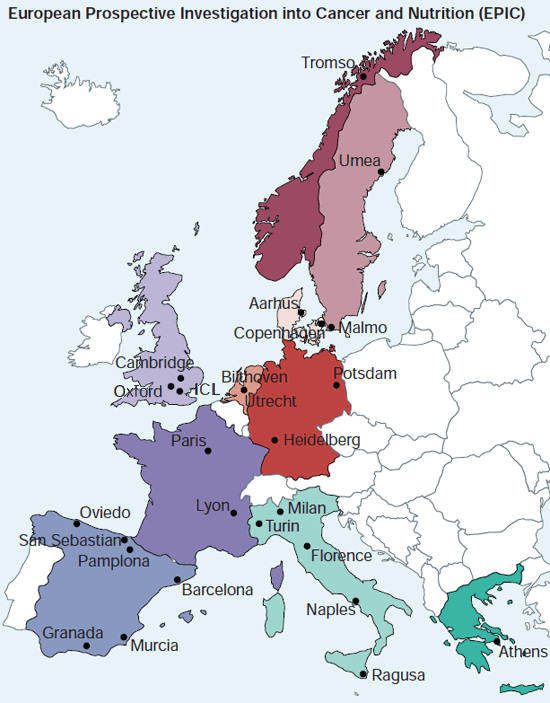Abstract
Endometrial cancer risk has been associated with reproductive factors (age at menarche, age at menopause, parity, age at first and last birth, time since last birth and use of oral contraceptives (OCs)]. However, these factors are closely interrelated and whether they act independently still requires clarification. We conducted a study to examine the association of menstrual and reproductive variables with the risk of endometrial cancer among the European Prospective Investigation into Cancer and Nutrition (EPIC). Among the 302,618 women eligible for the study, 1,017 incident endometrial cancer cases were identified. A reduction in endometrial cancer risk was observed in women with late menarche, early menopause, past OC use, high parity and a shorter time since last full-term pregnancy (FTP). No association was observed for duration of breast feeding after adjustment for number of FTP or for abortion (spontaneous or induced). After mutual adjustment, late age at menarche, early age at menopause and duration of OC use showed similar risk reductions of 7-8% per year of menstrual life, whereas the decreased risk associated with cumulative duration of FTPs was stronger (22% per year). In conclusion, our findings confirmed a reduction in risk of endometrial cancer with factors associated with a lower cumulative exposure to estrogen and/or higher exposure to progesterone, such as increasing number of FTPs and shorter menstrual lifespan and, therefore, support an important role of hormonal mechanisms in endometrial carcinogenesis.
